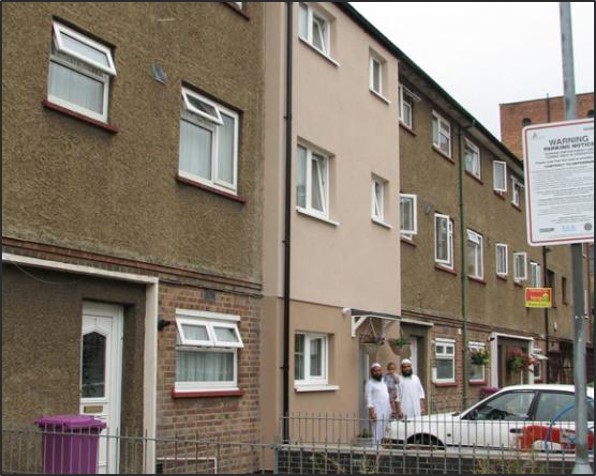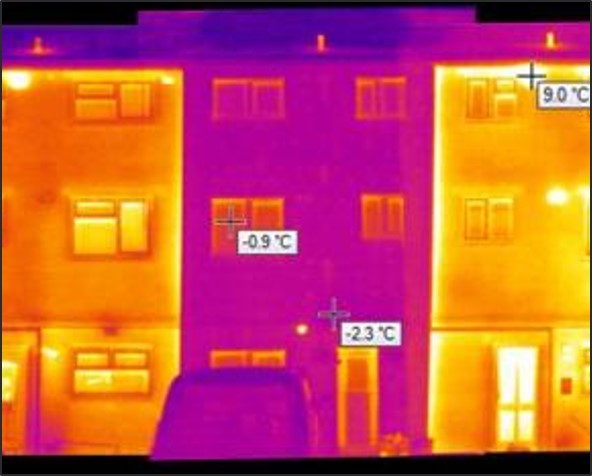Previous Work
It was important for our project to consider previous work done regarding retrofit, and we looked at both experimental work and simulation work.
Retrofit for the Future
|
One of the most notable experimental studies was the Retrofit for the Future scheme. Coordinated by Innovate UK, this was where over 100 homes in the UK had deep retrofit measures applied to them with the target of 80% emissions reduction for each property. To perform the retrofit, each project was awarded funding of up to £150,000 and designers and contractors were also encouraged to innovate to explore developing techniques and technologies to achieve these targets. As a result, many different approaches were taken for each of the projects, allowing a significant amount of information to be gained. The principle aim of this scheme was to gather data from these deep retrofits, which allowed future retrofits to use this information to deliver to a high standard.
|
Some of the key findings fed into our methodology. However, the Retrofit for the Future scheme only considered buildings on an individual basis, so no data was available on factors that would affect large scale application, such as large scale costing or grid balancing due to renewables. Examples of the buildings which underwent the retrofits can be found here.
Findings from the Retrofit for the Future project
As described above, Retrofit for the Future mainly aimed to gain knowledge on the retrofit process to advise other schemes on retrofit. There have been a number of reports and guides produced from this, including the Retrofit for the Future Guide. This examines 40 of the homes, to understand trends in the approaches taken as well as the successes and weak points of these projects.
|
There were 6 key themes of findings in this report ad some of the key findings were:
|
The report also made several recommendations of retrofit at scale:
Another important aspect of the feasibility of retrofit is the costs. Each of these projects was subsidised, so capital costs were not as much of a concern. Without these subsidies, these retrofits would not be feasible, since the payback of the retrofit measures are too long to justify the measures. A study from the Institute for Sustainability analysed 10 cases from the Retrofit for the Future scheme and found that for one case, the costs were £115,000, which is 6 times the feasible cost based on a 25 year payback. This was consistent for all of the projects and shows that cost is one of the key challenges for large scale retrofit. A key factor here is that the costs for the projects analysed are based on individual building retrofits. A large scale scheme could see significant decreases in costs, where economies of scale are applied and designers have a specific target cost to achieve to make the scheme feasible.
This information will prove very useful for any large scale retrofit scheme. It highlights some of the key challenges with retrofit which can be used in this project to advise a future large scale retrofit scheme.
- Large scale retrofit would benefit from technical improvements including re-working of the survey and specification process, new fabric treatment methods and low cost, reliable monitoring.
- The retrofit market needs to expand quickly to deliver at scale.
- Combining measures for a number of buildings can save valuable time (e.g. insulation for adjoining houses).
- Lead times for innovative products can be significant and increasing demand could lead to delays.
- Many projects benefited from close communication between design and installation teams. Project management is key for large projects.
Another important aspect of the feasibility of retrofit is the costs. Each of these projects was subsidised, so capital costs were not as much of a concern. Without these subsidies, these retrofits would not be feasible, since the payback of the retrofit measures are too long to justify the measures. A study from the Institute for Sustainability analysed 10 cases from the Retrofit for the Future scheme and found that for one case, the costs were £115,000, which is 6 times the feasible cost based on a 25 year payback. This was consistent for all of the projects and shows that cost is one of the key challenges for large scale retrofit. A key factor here is that the costs for the projects analysed are based on individual building retrofits. A large scale scheme could see significant decreases in costs, where economies of scale are applied and designers have a specific target cost to achieve to make the scheme feasible.
This information will prove very useful for any large scale retrofit scheme. It highlights some of the key challenges with retrofit which can be used in this project to advise a future large scale retrofit scheme.
Simulation Work
In terms of simulation work, one of the most important papers that we looked at was the EDEM study conducted by the Energy Systems Research Unit (ESRU) at the University of Strathclyde. Here, the Scottish residential building stock was modelled with 3 base building types on the ESRU Domestic Energy Model (EDEM). We believed we could create a stock model with a much larger number of base building types.


